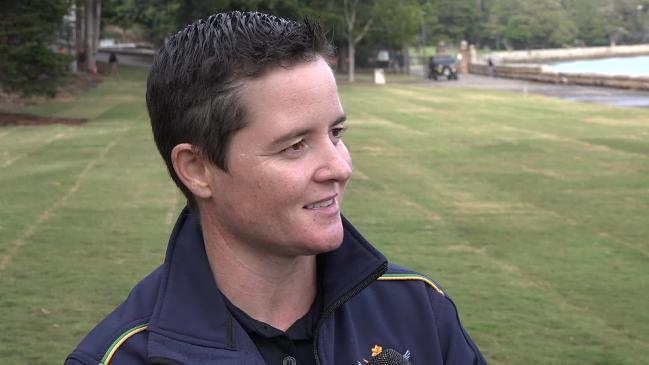Queensland teen makes miraculous recovery after a bone transplant
QUEENSLAND teen Sabella Ryan is back playing touch football again despite radical surgery last year to transplant a bone from her right leg into her arm to save it from amputation – and her surgeons say her recovery is nothing short of “miraculous”.
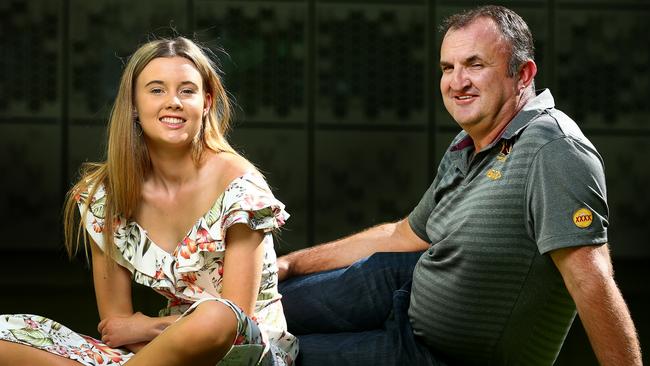
QLD News
Don't miss out on the headlines from QLD News. Followed categories will be added to My News.
TEENAGER Sabella Ryan is back playing touch football after radical surgery to transplant a bone from her right leg into her arm to save it from amputation.
In what one of her surgeons describes as a “miraculous” recovery, the sporty 16-year-old recently won a cross-country race for her age group at school despite having the operation to remove her fibula, in her lower leg, just last year.
Sabella, from Emerald, in Central Queensland, came close to dying after slipping from a rope swing tied to a tree growing beside the Nogoa River. She broke bones in both arms after missing the water and landing on the river bank during an afternoon out with friends in February last year.
Six days later, what was expected to be a relatively routine hospital admission escalated into a medical emergency after Sabella developed a serious bacterial infection in her left arm where one of the broken bones had pierced the skin.
She was flown to the Lady Cilento Children’s Hospital in Brisbane where hundreds of specialist doctors, nurses, allied health professionals and support staff worked together for months, not only to save her arm, but her life.
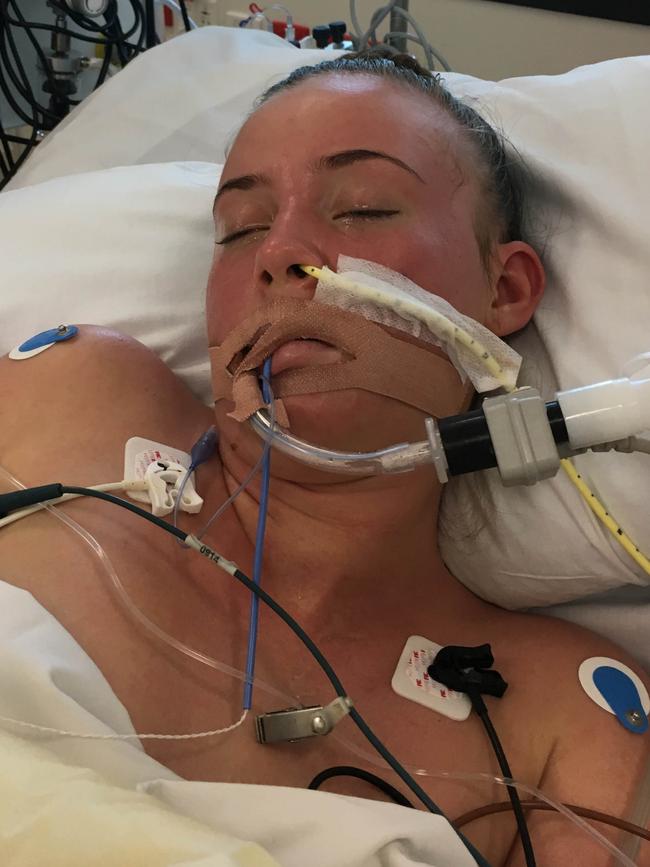
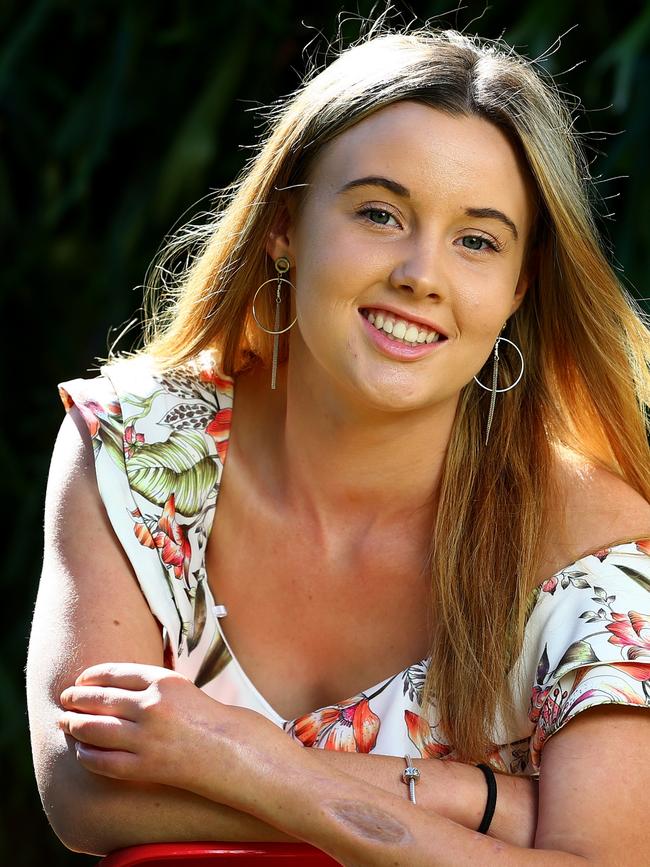
Sabella was pumped with powerful antibiotics and had surgery every few days to ‘wash out’ her arm to fight the infection at its source.
“Because of the area where she fell into the mud, into a murky river, there was an infection in there that was really difficult to manage,” her mother Marissa said. “It was a soup of infections. There wasn’t just one bacterium in there, she had multiple, really serious, bacteria.”
By April 18, Sabella’s condition had deteriorated so much she was admitted into intensive care with liver failure, kidney failure and hypovolemic shock – a life-threatening condition in which the organs fail to receive enough blood or oxygen. A priest was called to administer the last rites.
“We weren’t sure she was going to make it,” her mother said.
Marissa and husband Peter also had to make the traumatic decision to sign a form consenting to a liver transplant and left arm amputation for Sabella, the eldest of their three children, whose life revolved around sport.
“It was a very stressful time,” said Marissa, a midwife, who is acutely aware how close she came to losing her daughter.
Doctors are still unsure whether it was the severe infection, Sabella’s body reacting to the antibiotics used to treat it, or the anaesthetics administered during dozens of surgeries that caused her liver to fail. They suspect it may have been a combination of all three.
As the search began for a donor liver, doctors decided to stop all antibiotics for 48 hours. The teenager’s liver started to recover and the need for a liver transplant was averted.
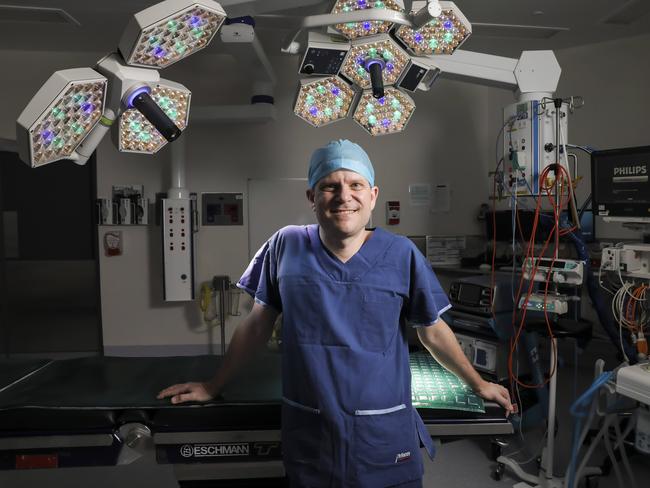
But some of Sabella’s specialists continued to push for an arm amputation to finally rid her body of the ongoing infection.
“Part of me wanted the arm gone, too, because I just wanted her well,” Marissa said.
From her bed in the Lady Cilento hospital’s intensive care unit, where she spent three weeks, Sabella reached out to surgeon Stuart Bade, begging him to come up with a plan to save her arm.
“I talked with Dr Bade and I pleaded that he find another way so that he did not have to amputate my arm,” the Marist College student said. “I told him a couple of times: ‘You’re not taking my arm’.”
Dr Bade, the Lady Cilento hospital’s director of plastic and reconstructive surgery, consulted with orthopaedic surgeon Peter Rowan and they devised an extraordinary solution – to remove a large portion of the infected bones in her forearm – the radius and ulna – and in a second operation a couple of months later, to transplant the fibula from her right leg into her arm.
“Radical is not a bad descriptive term,” Dr Bade said of Sabella’s treatment. “I’ve never had to deal with liver failure and kidney failure as a complication of someone fracturing their forearm.
“Certainly, excising the ulna and radius is radical surgery in order to get on top of the infection in her forearm. That is one of the most extraordinary cases that I’ve been a part of.
“For me, the amazing thing, the miraculous outcome in some ways, is that she’s now starting to play touch football again.”
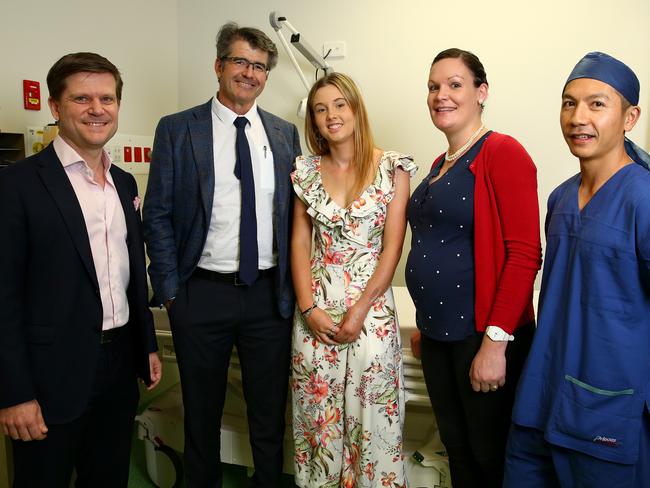
Dr Rowan, who works on both adults and children, described the fibula as the body’s “spare part”, a bone commonly used in surgical reconstructions because “you can do without it if you have to”.
He said the fibula – one of the long bones of the lower leg, which sits next to the tibia – was often used to reconstruct arms after trauma, such as a car accident, or following the removal of a tumour.
“We use the fibula mostly in adult reconstructions when there’s been major bone loss,” Dr Rowan said. “It’s quite a common procedure for bone reconstruction but not commonly done at the kids’ hospital.”
After significant portions of Sabella’s left forearm bones were removed during a six-hour operation on May 5, Dr Rowan used antibiotic-impregnated “bone cement” – effectively medical plasticine – to mould a temporary replacement until the fibula could be transplanted into her arm.
The bone cement has the consistency of toothpaste, allowing surgeons to fashion it into the desired shape, before it hardens.
Between the two major surgeries, Sabella was also treated in the hyperbaric chamber at the Royal Brisbane and Women’s Hospital (RBWH), a therapy used to help healing after an infection. She had 20 sessions over two weeks.
The RBWH’s hyperbaric medicine co-director Ken Thistlethwaite said the chamber was primarily used to treat soft tissue and bone radiation injuries in people experiencing long-term side effects from radiotherapy for cancer.
“Bad infections of the bone, and the support of surgery and antibiotics, do fall into our treatment area here at hyperbaric medicine, but we don’t see them too often,” Dr Thistlethwaite said. “Commonly we treat adults, but it is certainly not unheard of for us to see children or teenagers.”
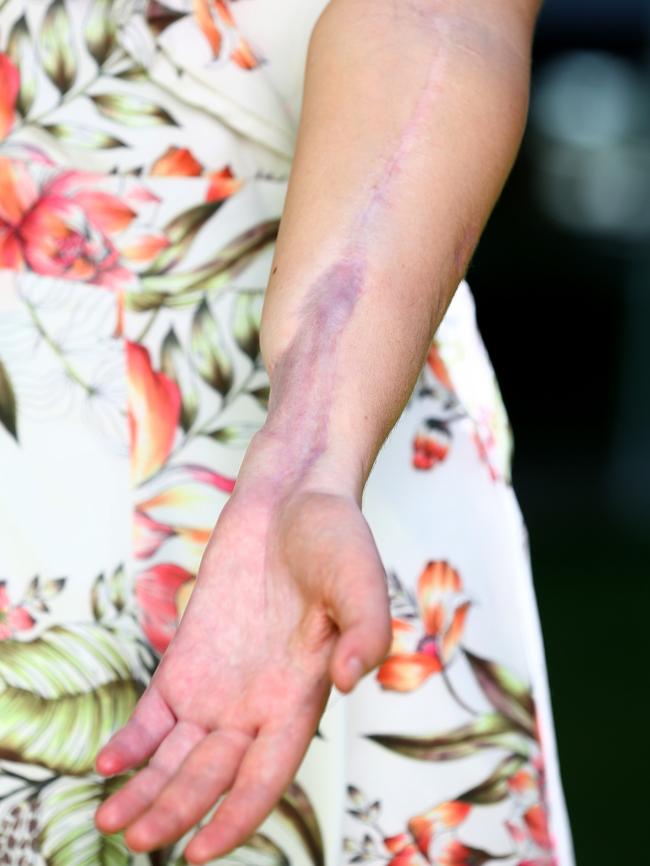
In intricate surgery on July 28, which lasted 11.5 hours, the fibula in Sabella’s right leg was removed and the blood vessels keeping it alive were connected microscopically with those in her left forearm.
Her surgeries were all the more remarkable given some of Queensland’s top paediatric anaesthetists had to be consulted over the medical balancing act of how best to keep her unconscious, immobile and pain free for long enough to allow surgeons to complete both operations without affecting her liver.
Because of her earlier liver failure, they were unable to give her anaesthetic gases – the cornerstone of modern anaesthesia – or another commonly used anaesthetic drug, propofol.
“We were in foreign territory,” said Trung Du, the primary anaesthetist on Sabella’s case. “We had to design a unique anaesthetic because she had liver failure which limited our ability to use some of the usual drugs.
“We used a few other anaesthetic agents that are safe but not routinely administered in a long anaesthesia. We needed special monitors in Sabella’s case to guide us. They were very important in making sure Sabella had adequate anaesthesia.
“Being awake during your procedure and not being able to tell anyone because you’re paralysed is a terrible outcome. We managed to get Sabella through the operation with her adequately asleep. She didn’t remember anything and had good pain relief afterwards.”
The case was recently presented to the annual scientific meeting of the Australian and New Zealand College of Anaesthetists in Sydney.
Almost 12 months on from her reconstructive surgery, Sabella, a right-hander, is back at school, doing well in Year 11 and planning a trip with her Marist College touch football team to Brisbane for a competition in October.
“I was really scared that I was going to let the team down,” she said of her return to the game earlier this year. “But it’s been really good. I’ve managed to play well.”
Her life will never be the same. When doctors removed the bones in her forearm, they also had to excise the scaphoid and lunate bones in her wrist. Her left wrist has been permanently fused.
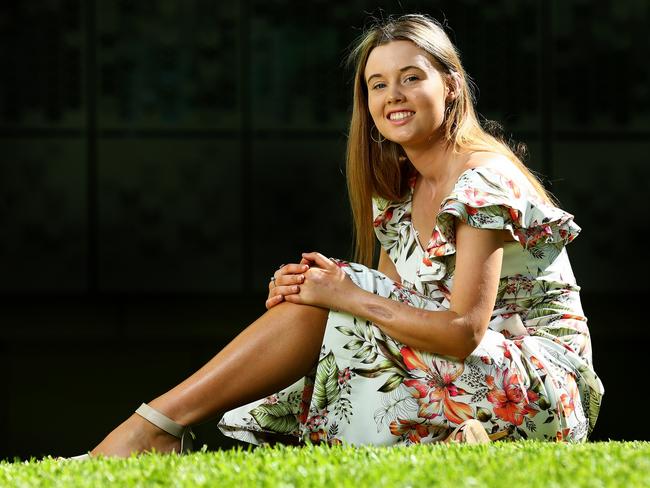
The talented sportswoman, who used to play A grade netball, no longer has the same level of movement in her left hand as she had before the surgery and she has lost some of her previous running speed.
“Before the accident I was in a lot of regional teams playing touch football and netball,” she said. “I’d train four times a week and on weekends just to get my fitness up.”
Her plan when she finished school was to study physiotherapy at university and trial for a Queensland netball team. But after her experience she hopes to study nursing instead.
“After everything that happened last year, I’m looking at specialising in paediatric nursing and hopefully one day work at the Lady Cilento,” Sabella said.
Despite the permanent disability in her left hand, she and her parents are grateful she’s alive and that she was able to keep her arm.
“We feel blessed,” Marissa said. “I can’t thank the Lady Cilento Children’s Hospital enough.
“We credit these amazing professionals in saving our daughter’s life. Everyone has been so wonderful, not just the doctors and nurses, but also all the support workers.”
Marissa said the family, which includes younger daughter Annalise, now 13, and son Callum, 9, would have financially struggled during Sabella’s long hospital admission without the support of their Emerald community and being able to stay at Ronald McDonald House while in Brisbane.
“The prayers and support for our family has really touched our hearts,” she said.
To donate to the Children’s Hospital Foundation, visit: childrens.org.au
